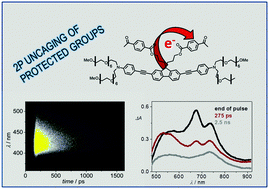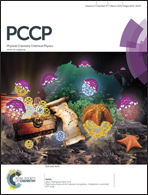Model dyads for 2PA uncaging of a protecting group via photoinduced electron transfer†
Abstract
Three dyads with a fluorene derivative as an electron-donor and with electron-acceptors of variable redox potentials were synthesized as models for two-photon activated uncaging via electron transfer. A spectroscopic and photophysical study of the component units and the dyads in solvents of different polarities demonstrated an efficient electron transfer (efficiencies > 80%) followed by charge recombination in the arrays (30 ps < τ < 1.6 ns). Recombination takes place to the ground state in all cases except for the dyad displaying the highest driving force for charge recombination in the apolar solvent. The effects of changing the solvent polarity, as well as the driving force, for electron-transfer are discussed in the frame of the current theories of electron transfer.


 Please wait while we load your content...
Please wait while we load your content...